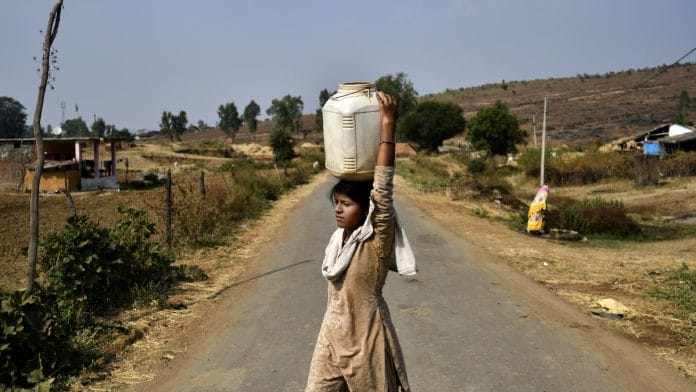With Modi government expected to announce a package to alleviate rural distress, ThePrint takes a look at ways suggested to help ease the problem.
New Delhi: The Narendra Modi government is widely expected to announce a massive Rs 2 lakh crore-plus package to alleviate rural distress in the interim budget to be presented Friday as it makes a final attempt to appease farmers — a politically crucial voter base — ahead of the general elections due in April-May.
The package is likely to include interest-free crop loans up to Rs 1 lakh and an income support scheme through the direct benefit transfer route.
The central government’s decision to provide sops to farmers follows its December electoral defeat in the three states of Chhattisgarh, Madhya Pradesh and Rajasthan. Farmers’ ire was pegged as one of the major reasons for the defeat of the ruling Bharatiya Janata Party (BJP) governments in all these states.
While there is little clarity about the final contours of the scheme likely to be announced Friday, ThePrint takes a look at a number of ways to tackle rural distress that have been suggested by economists, government bodies, state governments and political parties.
Quasi-universal basic rural income: Former CEA Arvind Subramanian, others
Former chief economic advisor Arvind Subramanian and his colleagues have proposed QUBRI, a basic income scheme which guarantees minimum cash transfers of Rs 18,000 per year to all rural households (both farm and non-farm) except for well-off households in rural areas.
The paper estimates that 75 per cent of the rural population in India can be covered at a total fiscal cost of about 1.3 per cent of GDP or Rs 2.64 lakh crore. It proposes that the Centre and the states should share the burden and part of the scheme should be funded by reducing the number of centrally-sponsored schemes and by doing away with interest subsidy, fertiliser subsidy and crop insurance schemes.
Also read: Rural India has earned significantly less since the year Modi came to power, says report
Augment farmer income: Niti Aayog
Government think-tank Niti Aayog favours doing away with all existing subsidies like fertiliser, fuel, electricity and interest subvention and replacing it with a direct income transfer based on per hectare holdings. It is also proposing a host of steps regarding minimum support price, including replacement of MSP by a minimum reserve price, which could be the starting point for auctions at mandis.
Minimum income guarantee for poor: Rahul Gandhi
Pre-empting the government’s move, Congress president Rahul Gandhi this week promised a minimum income guarantee for the poor if the party is voted to power in the Lok Sabha elections. Although hazy on the details and the minimum income amount, the promise made by the Congress aims to bridge the gap between the actual income of a below poverty line household through a direct cash transfer. It also proposes a rationalisation of subsidies to fund the scheme.
Rythu Bandhu scheme: Telangana govt
Launched last year, Telangana government’s Rythu Bandhu, a direct investment support scheme, gives farmers income support of Rs 4,000 per acre for the two cropping seasons of Kharif and Rabi. The cash is paid directly into the bank accounts of the farmers. The Telangana government allocated Rs 12,000 crore in 2018-19 budget for the scheme.
However, lack of adequate land records across India makes this kind of scheme difficult for a countrywide rollout.
Universal Basic Income: FY17 Economic Survey
The Economic Survey 2016-17 by then CEA Arvind Subramanian was the first major proposal for a universal basic income scheme for India’s poor through direct cash transfers. It said the cost of the scheme could be around 5 per cent of India’s GDP. It also proposed subsidy cuts to fund the scheme.
Also read: A ‘major’ hiccup in Modi’s rural housing target — 4 BJP-ruled states
Kalia scheme: Odisha govt
Announced in December 2018 by the Odisha government with a Rs 10,000-crore outlay to be spent over 3 years, the Krushak Assistance for Livelihood and Income Augmentation (Kalia) scheme promises Rs 10,000 a year to small and marginal farmers for taking up cultivation in the kharif and rabi season.







What about setting up Marketing federation to get correct price for the Farmer .Eg: When price of tomato was more than Rs.15/=per kg ,farmer was getting less than rs.3/= per kg.